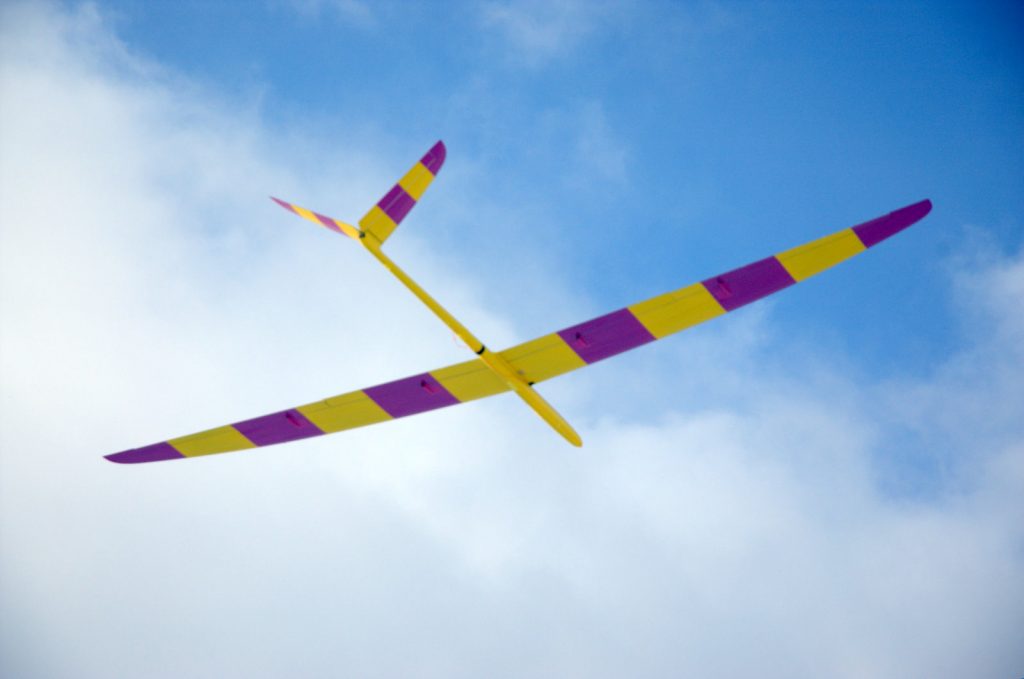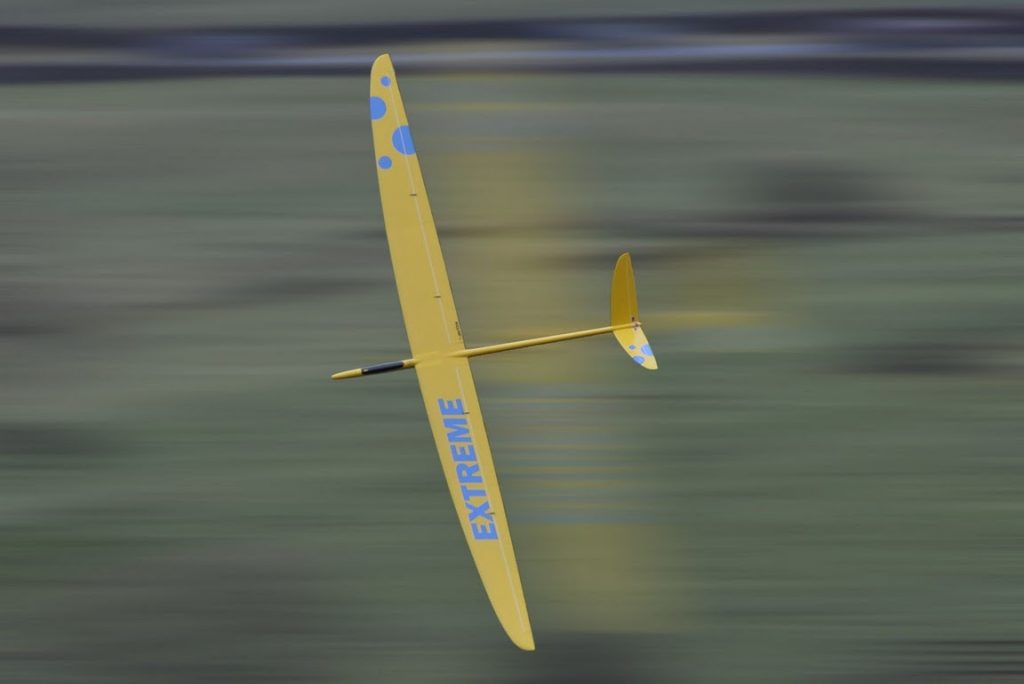Many thanks to Jon Edison for agreeing to provide the content of this page
Jon has helped to promote F3F in the UK and is one of the founding members of the Great Britain Slope Racing Association. He is Chair of the Silent Flight Technical Committee and Membership Secretary and Treasurer for the North York Moors Ridge Soaring Club (an active and prominent venue for many F3F and other slope related events).
Slope racing
Slope Racing is a pure form of gliding where no power is used except the lift generated by the wind blowing up a slope. A course is set out along the edge of a suitable hill, and models simply have to fly back and forth along the hill between pylons as quickly as possible – a simple task with a high degree of difficulty!!
History
Slope racing began in the 1970’s as models improved and radio control became more reliable. In the UK this racing was known as Pylon Racing and several models raced against each other in what was a man on man format. Pylons were spaced at 80m apart with pilots based at one of the pylons. 10 laps (there and back counting as one) were flown for each race. This was great fun but entailed a fair amount of attrition as models were prone to bump into each other, sometimes with disastrous consequences. As this began to take its toll so models evolved from high tech moulded models into a softer form which could take a knock or too. Speed and above all fun, was not diminished. Some of these foam projectiles accomplishing astonishing turns of speed and manouverability. This became known as the 60 inch class due to the wing span of the models.
Meanwhile in Scandinavia flyers were less impressed with the UK style of racing and introduced their own racing format of one model at a time racing against the clock, a form of Time Trial. Models could once again become sophisticated moulded racers with wing span between 2.5m and 3.5m. The risk of damaged was limited to only that which the pilot could impart!
In the early days, speeds for the 10 laps of a 100m course (1km) were in the mid 40 secs. Today pilots achieve sub 40 secs regularly, and given a suitable slope and wind, sub 30secs are now common. That’s fast!
This form of racing has now been adopted as the international class of F3F.
Slope racing today
Only F3F is enjoying a high level of support, 60 inch has fallen from favour and at this moment (Aug 2020) no 60 inch competitions are flown.
F3F is currently flown at local, national and international level. The Specialist body of the Great Britain Slope Racing Association ( GBSRA ), runs the National league and coordinates other UK events into the calendar. Entry to the competitions is via the GBSRA league coordinator who will advertise the events on various forums and web sites – these are the main ones:
- BMFA at https://bmfa.org/ for Rules and Calendar
- GBSRA at http://www.gbsra.co.uk for Competition Entry and Results
- BARCS at https://www.barcs.co.uk/forums/ for discussion and events
Entry is open to all with any suitable model. F3F style Models are generally around 3m span and are available from various sources including directly from manufacturers.
Further links
- UK Supplier – http://www.t9hobbysport.com/
- FAI Rules for F3F – https://www.fai.org/page/ciam-code (sc4_vol_F3_Soaring_20.pdf )
- UK Variations – https://bmfa.org/ (Download, Contest Rule Books (Rul20-SF.pdf Section 7.4.)
F3F race at Horcum





